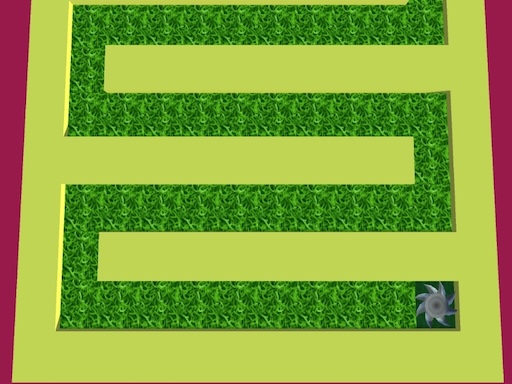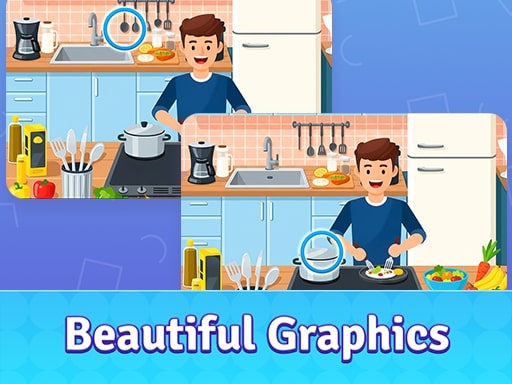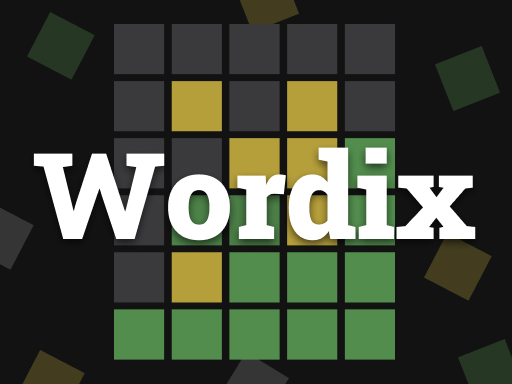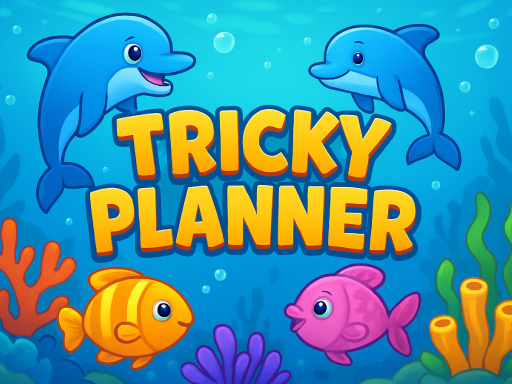Chroma Block Puzzle
About Chroma Block Puzzle
Okay, so listen, you know how sometimes you just stumble onto a game, completely out of the blue, and it just *clicks*? Like, it resonates with that part of your brain that craves a certain kind of challenge, a specific flavor of satisfaction? Well, that’s exactly what happened to me recently, and I absolutely have to tell you about it. I’ve been completely obsessed with this thing called Chroma Block Puzzle, and honestly, it’s become my new go-to for those moments when I need to just… *think*.
I mean, on the surface, it sounds deceptively simple, right? You’ve got these colored blocks, and your goal is to guide them to exits that match their color. Like, a red block goes to the red exit, a blue block to the blue exit. Sounds easy enough, a basic puzzle game premise. But man, oh man, that initial impression is like looking at the tip of an iceberg and thinking you understand the whole thing. The moment you dive in, you realize there’s so much more beneath the surface, a whole world of intricate mechanics and clever design just waiting to unfold.
What I love about games like this is that immediate sense of understanding the rules, but then the slow, delightful dawning of just how deep those rules can go. You start with a few blocks, a straightforward path, and you’re feeling pretty good about yourself. You slide a red block, then a blue, and *boom*, level complete. You get that little rush of accomplishment, that satisfying chime, and you think, "Okay, I got this." But then, the very next level, the board shifts. The exits aren’t conveniently placed anymore. Blocks are nestled in corners, or they’re blocking each other, and suddenly, that simple "move block to exit" becomes a complex dance of spatial reasoning.
There's something magical about how Chroma Block Puzzle introduces its challenges. It’s not just about making the path clear; it’s about *sequencing*. You can almost feel the gears turning in your head as you mentally slide blocks around. If I move the blue block *here*, it’ll clear a path for the red, but then the blue block itself will be trapped. So, maybe I need to move the yellow block *first*, even though it’s not going anywhere yet, just to open up a temporary holding spot for the blue. You’ll find yourself staring at the screen, sometimes for minutes, just running through possibilities in your mind, like you’re playing a mental chess match with yourself. And when that perfect sequence finally clicks into place, that moment of "Aha!" is just… pure dopamine. It’s the kind of satisfaction that makes you lean back in your chair, a little smile playing on your lips, feeling like a genius.
But the real magic, the thing that truly elevates Chroma Block Puzzle from a good puzzle game to an *addictive* one, is how it keeps things fresh. You’re not just repeating the same block-sliding mechanics ad nauseam. The game has multiple levels, obviously, but it’s the way these levels evolve and introduce new elements that just blows me away. Just when you think you’ve mastered a certain type of layout, or figured out a common pattern, the game throws a curveball.
And this is where the "various items will randomly appear in each level to enhance the fun of the gameplay" comes in, and honestly, that description doesn't even do it justice. These aren't just little power-ups; they are *game changers*. Imagine you’re meticulously planning your moves, three steps ahead, and then suddenly, a block appears that can only move diagonally. Or a portal opens up, and if a block slides into it, it teleports to a completely different part of the board, potentially messing up your entire strategy or, if you’re clever, providing an unexpected shortcut.
I remember one level, I was completely stumped. There was a red block stuck behind a blue one, and the blue exit was on the opposite side of the board from the red exit, with no way to get the blue block out of the way without trapping the red. I must have spent a good ten minutes just trying different combinations, feeling that familiar frustration building up. You know that feeling, right? When you’re so close to solving it, but you just can’t see the solution, and it’s right there, mocking you. And then, out of nowhere, a "shifter" block appeared. It was this iridescent, shimmering thing, and when I moved it, it *swapped* the positions of two adjacent blocks. My jaw practically dropped. It wasn't something I had planned for, but it was exactly the tool I needed. I had to completely re-evaluate my entire approach, not just for the next few moves, but for the whole puzzle. It turned that moment of frustration into a sudden, exhilarating sprint of new possibilities.
What's fascinating is how these random items don't feel like cheap gimmicks. They feel like organic extensions of the puzzle itself. They force you to adapt, to think on your feet, to be flexible with your strategy. Sometimes they're a blessing, sometimes they're a curse, but they always, *always* make you look at the puzzle in a completely new light. The brilliant thing about this is that it prevents the game from ever feeling stale. You never know what ingenious new mechanic or disruptive element the next level is going to throw at you, and that anticipation is a huge part of the draw. It keeps you coming back, eager to see what clever twist the developers have cooked up next.
You'll find yourself falling into this incredible flow state. The outside world just melts away. The colors on the screen, the satisfying *thunk* as a block slides into place, the gentle hum of the background music – it all blends into this focused, meditative experience. I mean, I’ve always been drawn to games that demand a certain kind of mental engagement, whether it’s the strategic depth of a grand strategy game or the precise timing of a rhythm game. But there’s something uniquely satisfying about a puzzle game that manages to hit that sweet spot between challenging and relaxing, where the frustration is just enough to make the eventual breakthrough feel incredibly rewarding.
In my experience, the best moments come when you’re facing a truly complex board, multiple colors, tight spaces, and then one of those random items pops up, and you suddenly see a path you hadn’t considered before. It’s like a lightbulb switching on in your brain. You can almost feel the tension in your shoulders ease as the solution unfolds before you, step by careful step. The visual feedback is crisp, the blocks slide smoothly, and there’s this wonderful sense of tactile satisfaction, even though you’re just moving things with a mouse or a finger. It’s elegant, it’s clean, and it’s incredibly well-designed.
This makes me wonder about the thought process behind creating these levels. How do they balance the initial challenge with the introduction of new mechanics? How do they ensure that the random items enhance, rather than detract from, the core puzzle experience? It’s a testament to really clever game design, where every element feels intentional, even the seemingly random ones. They’ve managed to create a system where unpredictability actually *adds* to the strategic depth, rather than making it feel chaotic.
Honestly, if you're someone who appreciates a good brain-teaser, who loves that feeling of unraveling a complex problem, or who just needs a game that can genuinely absorb you for hours without you even noticing the time pass, you *have* to give Chroma Block Puzzle a try. It’s not just moving blocks; it’s a journey of discovery, a constant test of your spatial reasoning, and a genuinely delightful experience that keeps on giving. I promise you, you'll be hooked before you know it. Just wait until you encounter your first "gravity well" block – that's when the real fun begins.
I mean, on the surface, it sounds deceptively simple, right? You’ve got these colored blocks, and your goal is to guide them to exits that match their color. Like, a red block goes to the red exit, a blue block to the blue exit. Sounds easy enough, a basic puzzle game premise. But man, oh man, that initial impression is like looking at the tip of an iceberg and thinking you understand the whole thing. The moment you dive in, you realize there’s so much more beneath the surface, a whole world of intricate mechanics and clever design just waiting to unfold.
What I love about games like this is that immediate sense of understanding the rules, but then the slow, delightful dawning of just how deep those rules can go. You start with a few blocks, a straightforward path, and you’re feeling pretty good about yourself. You slide a red block, then a blue, and *boom*, level complete. You get that little rush of accomplishment, that satisfying chime, and you think, "Okay, I got this." But then, the very next level, the board shifts. The exits aren’t conveniently placed anymore. Blocks are nestled in corners, or they’re blocking each other, and suddenly, that simple "move block to exit" becomes a complex dance of spatial reasoning.
There's something magical about how Chroma Block Puzzle introduces its challenges. It’s not just about making the path clear; it’s about *sequencing*. You can almost feel the gears turning in your head as you mentally slide blocks around. If I move the blue block *here*, it’ll clear a path for the red, but then the blue block itself will be trapped. So, maybe I need to move the yellow block *first*, even though it’s not going anywhere yet, just to open up a temporary holding spot for the blue. You’ll find yourself staring at the screen, sometimes for minutes, just running through possibilities in your mind, like you’re playing a mental chess match with yourself. And when that perfect sequence finally clicks into place, that moment of "Aha!" is just… pure dopamine. It’s the kind of satisfaction that makes you lean back in your chair, a little smile playing on your lips, feeling like a genius.
But the real magic, the thing that truly elevates Chroma Block Puzzle from a good puzzle game to an *addictive* one, is how it keeps things fresh. You’re not just repeating the same block-sliding mechanics ad nauseam. The game has multiple levels, obviously, but it’s the way these levels evolve and introduce new elements that just blows me away. Just when you think you’ve mastered a certain type of layout, or figured out a common pattern, the game throws a curveball.
And this is where the "various items will randomly appear in each level to enhance the fun of the gameplay" comes in, and honestly, that description doesn't even do it justice. These aren't just little power-ups; they are *game changers*. Imagine you’re meticulously planning your moves, three steps ahead, and then suddenly, a block appears that can only move diagonally. Or a portal opens up, and if a block slides into it, it teleports to a completely different part of the board, potentially messing up your entire strategy or, if you’re clever, providing an unexpected shortcut.
I remember one level, I was completely stumped. There was a red block stuck behind a blue one, and the blue exit was on the opposite side of the board from the red exit, with no way to get the blue block out of the way without trapping the red. I must have spent a good ten minutes just trying different combinations, feeling that familiar frustration building up. You know that feeling, right? When you’re so close to solving it, but you just can’t see the solution, and it’s right there, mocking you. And then, out of nowhere, a "shifter" block appeared. It was this iridescent, shimmering thing, and when I moved it, it *swapped* the positions of two adjacent blocks. My jaw practically dropped. It wasn't something I had planned for, but it was exactly the tool I needed. I had to completely re-evaluate my entire approach, not just for the next few moves, but for the whole puzzle. It turned that moment of frustration into a sudden, exhilarating sprint of new possibilities.
What's fascinating is how these random items don't feel like cheap gimmicks. They feel like organic extensions of the puzzle itself. They force you to adapt, to think on your feet, to be flexible with your strategy. Sometimes they're a blessing, sometimes they're a curse, but they always, *always* make you look at the puzzle in a completely new light. The brilliant thing about this is that it prevents the game from ever feeling stale. You never know what ingenious new mechanic or disruptive element the next level is going to throw at you, and that anticipation is a huge part of the draw. It keeps you coming back, eager to see what clever twist the developers have cooked up next.
You'll find yourself falling into this incredible flow state. The outside world just melts away. The colors on the screen, the satisfying *thunk* as a block slides into place, the gentle hum of the background music – it all blends into this focused, meditative experience. I mean, I’ve always been drawn to games that demand a certain kind of mental engagement, whether it’s the strategic depth of a grand strategy game or the precise timing of a rhythm game. But there’s something uniquely satisfying about a puzzle game that manages to hit that sweet spot between challenging and relaxing, where the frustration is just enough to make the eventual breakthrough feel incredibly rewarding.
In my experience, the best moments come when you’re facing a truly complex board, multiple colors, tight spaces, and then one of those random items pops up, and you suddenly see a path you hadn’t considered before. It’s like a lightbulb switching on in your brain. You can almost feel the tension in your shoulders ease as the solution unfolds before you, step by careful step. The visual feedback is crisp, the blocks slide smoothly, and there’s this wonderful sense of tactile satisfaction, even though you’re just moving things with a mouse or a finger. It’s elegant, it’s clean, and it’s incredibly well-designed.
This makes me wonder about the thought process behind creating these levels. How do they balance the initial challenge with the introduction of new mechanics? How do they ensure that the random items enhance, rather than detract from, the core puzzle experience? It’s a testament to really clever game design, where every element feels intentional, even the seemingly random ones. They’ve managed to create a system where unpredictability actually *adds* to the strategic depth, rather than making it feel chaotic.
Honestly, if you're someone who appreciates a good brain-teaser, who loves that feeling of unraveling a complex problem, or who just needs a game that can genuinely absorb you for hours without you even noticing the time pass, you *have* to give Chroma Block Puzzle a try. It’s not just moving blocks; it’s a journey of discovery, a constant test of your spatial reasoning, and a genuinely delightful experience that keeps on giving. I promise you, you'll be hooked before you know it. Just wait until you encounter your first "gravity well" block – that's when the real fun begins.
Enjoy playing Chroma Block Puzzle online for free on Petlg Games. This Puzzle game offers amazing gameplay and stunning graphics. No downloads required, play directly in your browser!
How to Play
Mouse click or tap to play





Comments
This game is awesome! I love the graphics and gameplay.
One of the best games I've played recently. Highly recommended!